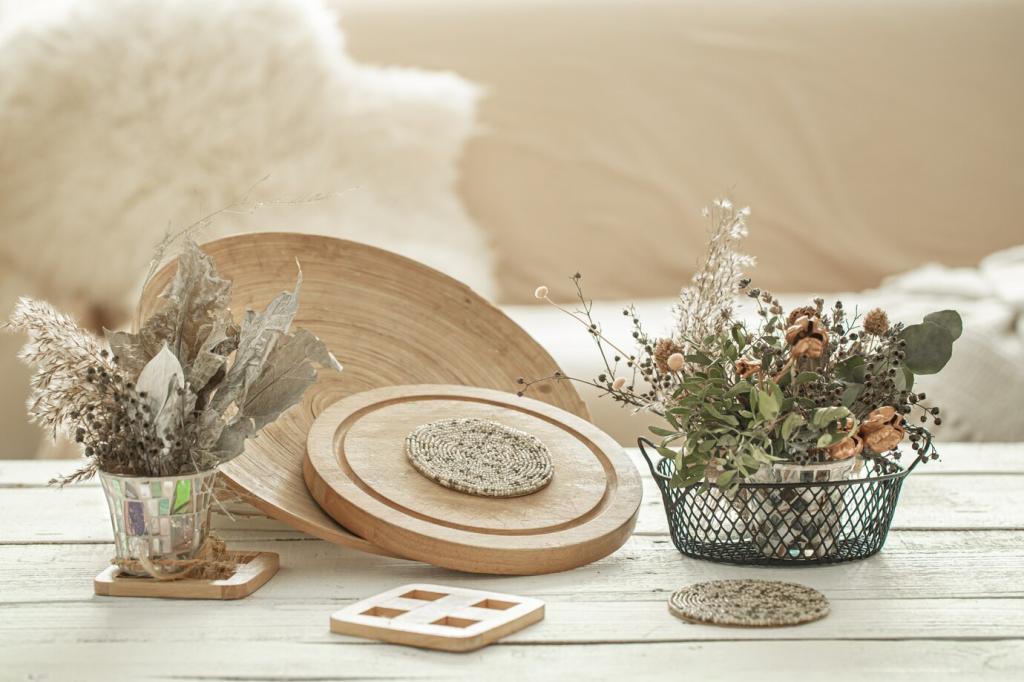The world of interior design is undergoing a quiet revolution as professionals and homeowners alike seek out alternatives that are as aesthetically appealing as they are environmentally responsible. Innovative renewable material solutions are leading this transformation, offering creative ways to reimagine every aspect of interior environments. These advancements in materials allow us to decrease our carbon footprint, enhance indoor air quality, and promote a healthier, more sustainable future—without sacrificing style or durability. By embracing these forward-thinking materials, the interiors industry paves the way for eco-friendly spaces that inspire well-being and respect the planet.
Biobased Materials Transforming Interior Spaces
Sustainable Wood and Bamboo Applications
Wood and bamboo have long been regarded as staples in interior architecture, but recent innovations in sustainably managed sources have elevated them into paragons of renewable material design. Fast-growing bamboo, for example, is now engineered to mimic the strength and beauty of hardwoods without exhausting old-growth forests. Sustainable wood harvesting ensures that every plank can be traced back to responsible forestry practices. These advantages, coupled with improved processing techniques, have made wood and bamboo even more desirable for floors, wall panels, and furniture. Moreover, their ability to sequester carbon and biodegrade at end of life ensures they meet modern green building standards without compromising on warmth and character.
Cork and Mycelium-Based Surfaces
Cork and mycelium-based surfaces are captivating interior designers due to their remarkable sustainability profiles and unique tactile qualities. Cork, obtained from the bark of cork oak trees, regenerates naturally, allowing for repeated harvests without harming the tree. Its natural elasticity, durability, and acoustic properties make it a favorite for flooring and wall treatments in environmentally conscious projects. Mycelium, the underground root structure of fungi, can be grown into custom shapes and forms, creating intriguing surface finishes, lightweight panels, and insulating wall systems. These materials demonstrate how renewable resources can be harnessed to develop healthy, versatile, and wholly original interior solutions, strengthening a commitment to ecological stewardship.
Plant-Based Textiles for Upholstery and Drapery
Plant-based textiles have established themselves as the gold standard for responsible interior upholstery and drapery. Made from rapidly renewable fibers such as organic cotton, linen, hemp, and even lyocell derived from wood pulp, these fabrics require far fewer resources than traditional synthetics. Modern processing advances allow for soft, durable fabrics that meet performance demands in high-traffic environments such as hotels or offices. Beyond their renewable origins, many of these textiles are produced without harmful dyes or chemical finishes, contributing to improved indoor air quality and occupant well-being. Their natural textures create an inviting atmosphere and infuse interior spaces with a grounded, organic appeal.

High-Performance Natural Composites
Hemp and Flax Natural Fiber Panels
Hemp and flax have long been recognized for their robustness as crop fibers, and today they are at the forefront of interior innovation as natural fiber panels. When combined with low-impact resins, these renewable fibers create wall panels and cabinetry that are both lightweight and exceptionally durable. Their excellent acoustic insulation properties make them ideal for schools, offices, and homes seeking peace and quiet. What sets hemp and flax panels apart is their low environmental footprint—these plants can be grown quickly using little water or fertilizer, and they help sequester carbon in the process. As a result, these panels are an emblem of how forward-thinking material science can deliver both form and function sustainably.
Bio-Resins in Composite Countertops
Bio-resins represent a significant ecological advancement over synthetic petrochemical resins traditionally used in composite materials. Derived from rapidly renewable sources such as soy, corn, or cashew shells, bio-resins bind together recycled stone, glass, or natural aggregate to form highly durable countertops and work surfaces. These alternatives are inherently low in volatile organic compounds (VOCs), meaning they contribute to healthier indoor air. Their adaptability and strength allow for sleek designs and seamless installations, while their renewable content assures clients that they are supporting a more regenerative materials economy. Bio-based composites set a powerful precedent for how the chemistry of interiors can harmonize with nature.
Straw and Agricultural Byproduct Boards
The use of straw and agricultural byproducts in the creation of interior boards offers a compelling example of closed-loop design. Traditionally viewed as waste, materials like wheat straw, rice husks, or bagasse are now processed into robust, formaldehyde-free boards for wall paneling, cabinetry, and other interior applications. These innovative boards divert agricultural excess from incineration or landfill, giving them a valuable second life. Their performance is on par with conventional wood-based boards, but their environmental credentials are far stronger—they are rapidly renewable, sequester carbon, and support rural economies. By choosing these bio-boards, designers can create interiors that are as environmentally restorative as they are visually appealing.
